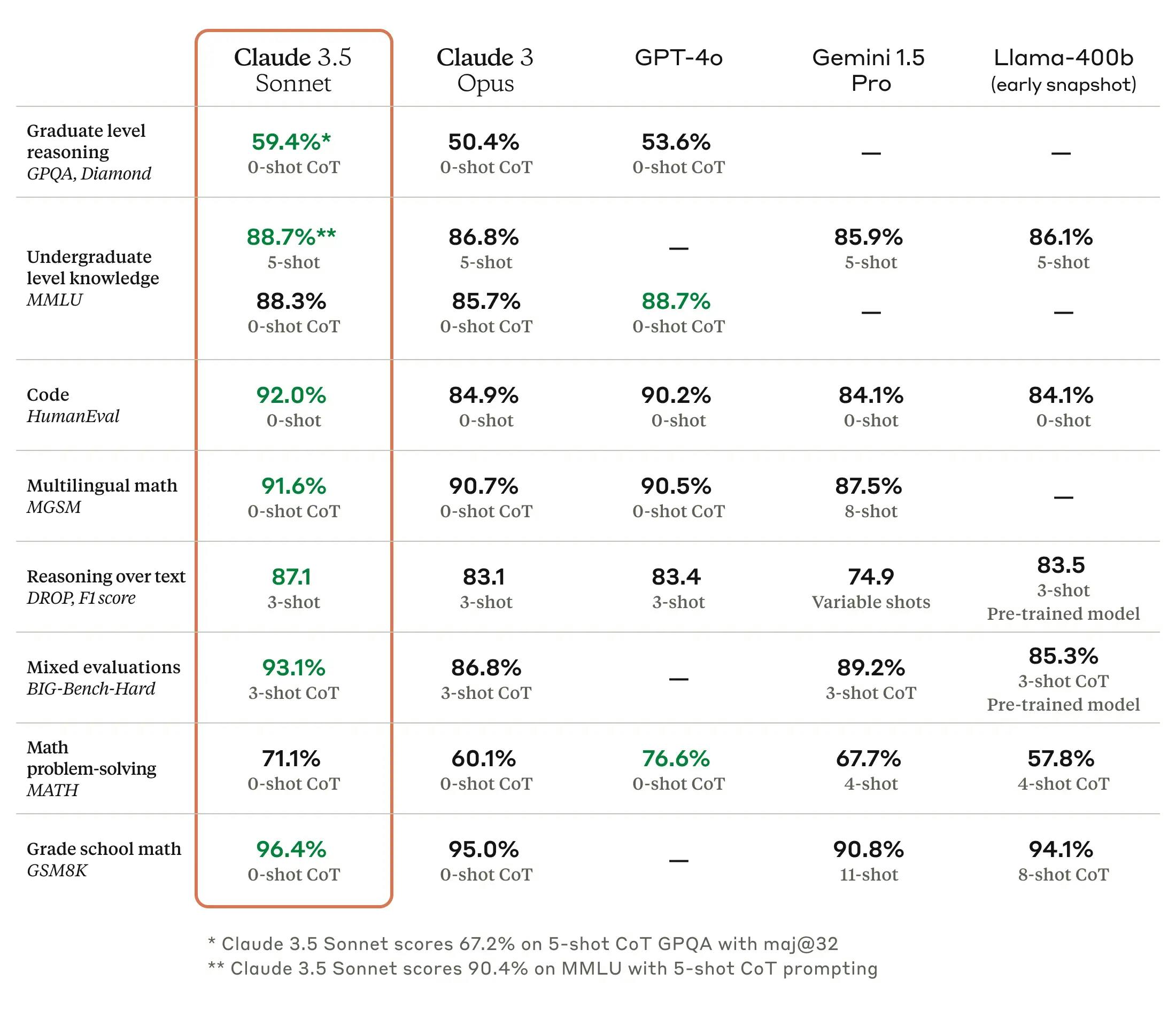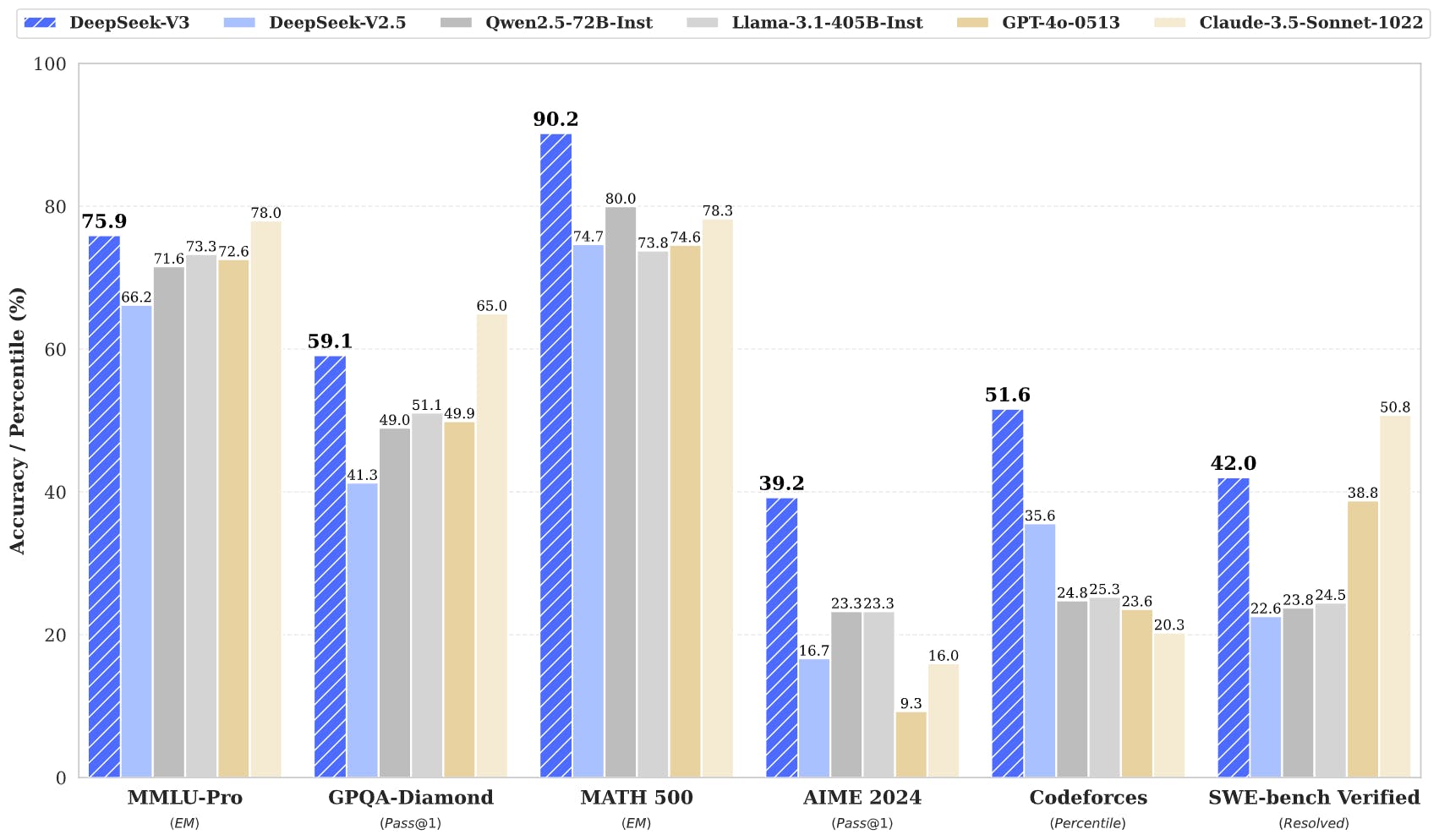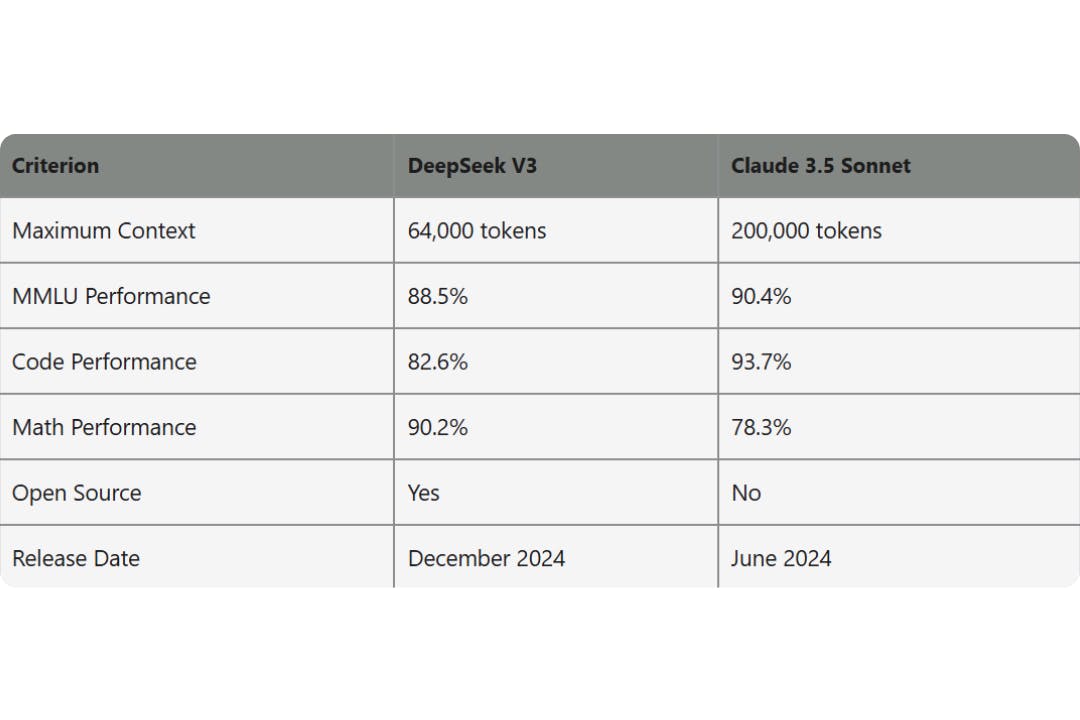DeepSeek V3 vs. Claude 3.5 Sonnet: Which AI will be more powerful in assisting you?
A comprehensive comparison between DeepSeek V3 and Claude 3.5 Sonnet AI models, analyzing their performance, capabilities, and best use cases to help you make an informed choice.
Discover why the choice between deepseek v3 and claude 3.5 sonnet could revolutionize your way of working. Did you know that these two ai models are currently vying for the top spot in terms of performance, with price differences reaching up to 1400%? Let's dive into this detailed analysis to help you make the best choice.
What lies behind these two AI giants
The year 2024 marks a pivotal turning point in the evolution of ai models. On one side, deepseek v3, launched in december 2024, is disrupting the status quo with its mixture-of-experts (moe) architecture that integrates 671 billion parameters. On the other side, Claude 3.5 Sonnet, unveiled in june 2024 by anthropic, enforces its vision of a more ethical and controlled ai.
Deepseek v3's major innovation lies in its unique approach: only 37 billion parameters are activated for each token, allowing for remarkable efficiency while maintaining low operational costs. Meanwhile, claude 3.5 sonnet relies on a proprietary architecture optimized for security and reliability.
Performance and capabilities: A tight duel
Benchmarks and comparative tests
The performance of these two models is challenged across multiple dimensions. On the mmlu benchmark, which measures language comprehension, claude 3.5 sonnet takes a slight lead with 90.4% compared to deepseek v3's 88.5%.

Source : anthropic
In programming tasks, the humaneval test shows a clear domination by claude 3.5 sonnet, achieving a 93.7% success rate, while deepseek v3 manages only 82.6%. However, deepseek v3 regains the advantage on complex math problems, scoring 90.2% on the math benchmark, surpassing its competitor's 78.3%.

source : github
Context and data handling
The ability to process context is a major advantage for claude 3.5 sonnet, which can handle up to 200,000 tokens—more than three times the 64,000-token limit of deepseek v3. This difference is crucial for analysing long documents or complex conversations.
Ease of use
Deepseek v3 shines with its open-source nature, offering enhanced flexibility for developers. Available through several providers (deepseek, fireworks ai, hyperbolic), it allows for customized integration. Claude 3.5 sonnet, accessible via anthropic api and Swiftask, AI assistant, offers a more structured but also more secure experience.
Strengths and weaknesses: Which model to choose based on your needs?
Optimal use cases
Deepseek v3 excels in:
- Complex mathematical computations
- Projects requiring advanced personalization
- Applications with limited budgets
Claude 3.5 sonnet stands out for:
- Software development and programming
- Analysis of lengthy documents
- Tasks requiring high ethical precision
Limitations and points of consideration
Deepseek v3 presents a few restrictions:
- Smaller context window (64,000 tokens)
- Variable performance in programming
- Less comprehensive documentation
Claude 3.5 sonnet shows limitations in:
- High usage costs
- Deployment flexibility
- Model customization
Final comparative analysis

The choice between deepseek v3 and claude 3.5 sonnet will primarily depend on your priorities. If budget constraints are significant and flexibility is paramount, deepseek v3 is the obvious choice. Conversely, if programming precision and the ability to handle large volumes of data are essential, then claude 3.5 sonnet justifies its higher investment.
Whatever decision you make, these two models represent the state-of-the-art in generative ai and are likely to continue improving in the coming months. To make the best choice, start by identifying your top needs and test both solutions on use cases that are representative of your activity.
author
OSNI

Published
February 19, 2025